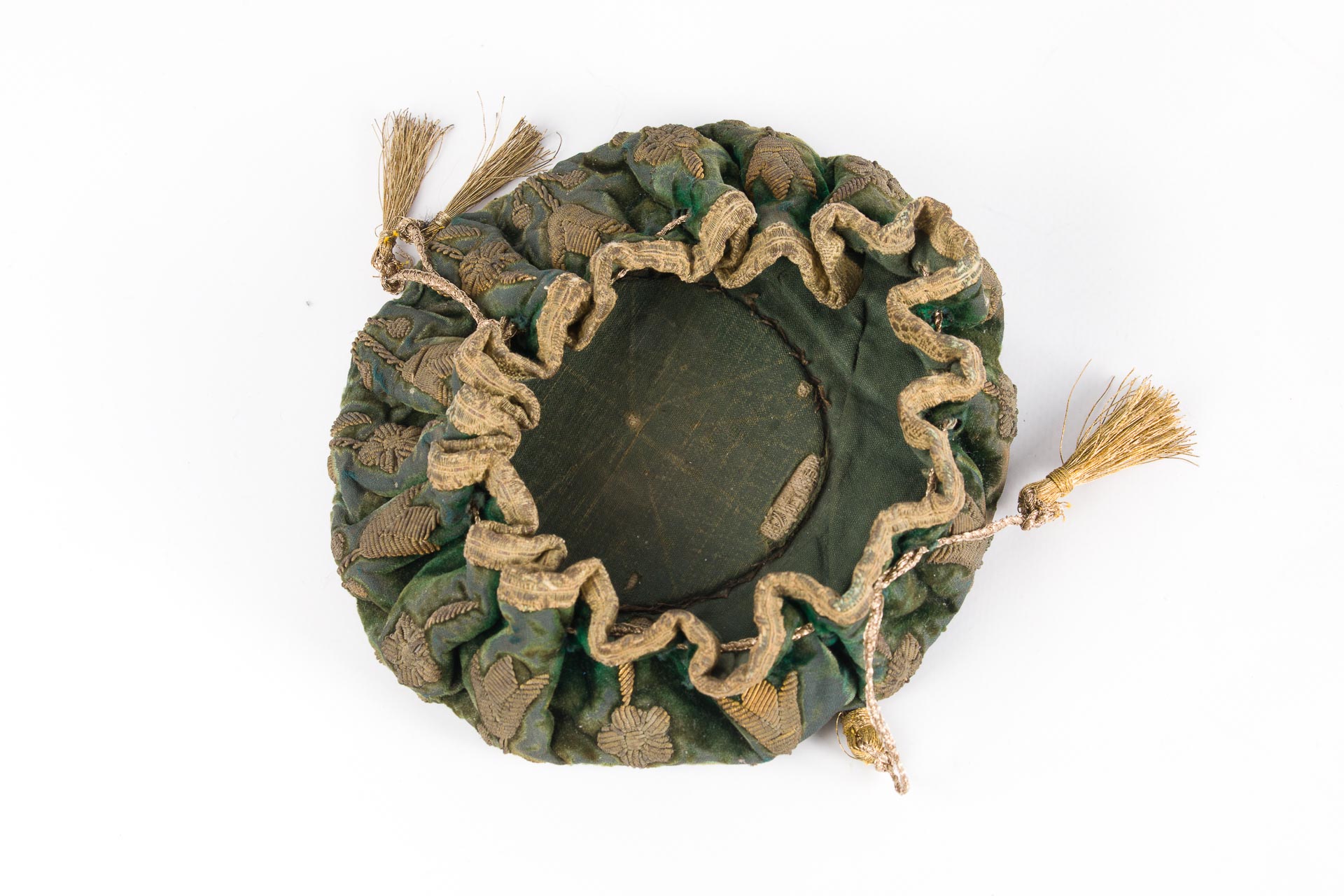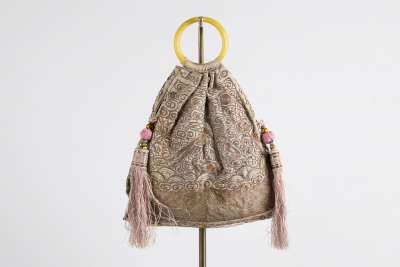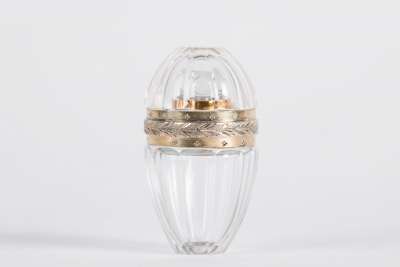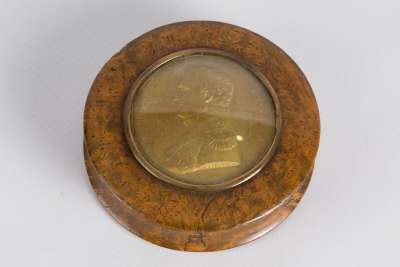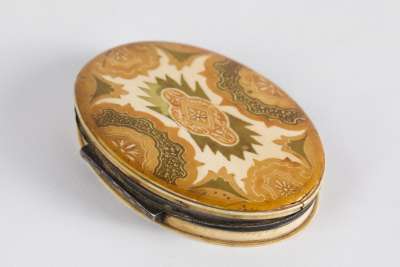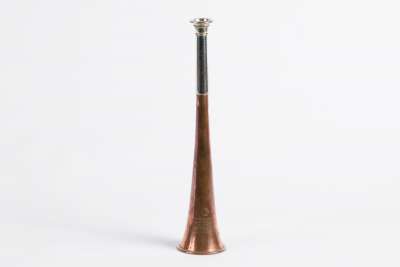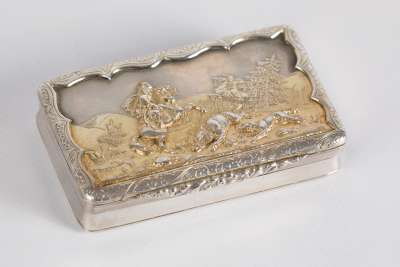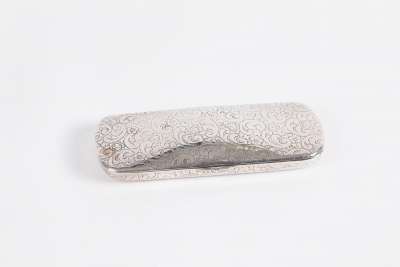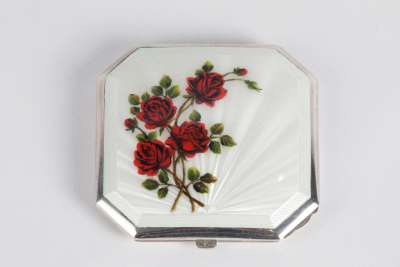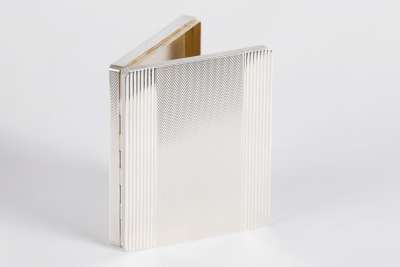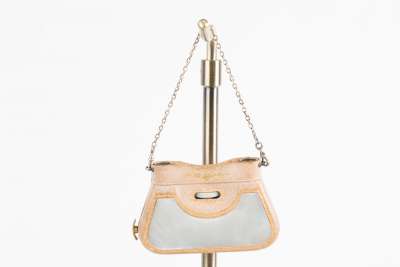This French gaming purse from the 1700s is an exquisite example of period craftsmanship. The purse is made of velvet, featuring a detailed embroidered floral design that stands out against the rich fabric. The embroidery showcases vibrant threads, likely silk, which have been skillfully stitched to create intricate floral patterns. The gaming purse hails from France, a nation renowned for its rich tradition of textile artistry, particularly during the 18th century. This piece was likely used as a portable gaming accessory, reflecting the social customs and leisure activities of the French aristocracy of the time.
Condition Report
The gaming purse exhibits wear consistent with its age and historical use. The velvet fabric shows signs of slight fading, typical for a textile of this era. The embroidery, while largely intact, may exhibit minor fraying at the edges, which is expected given the purse's age. The interior of the purse may display slight discolouration, a testament to its historical authenticity and use. Despite these age-related characteristics, the purse remains a visually captivating piece, offering insight into 18th-century French craftsmanship. Potential buyers should appreciate these signs of wear as indicators of the purse's storied past.
Dimensions
Weight: 79gm, Length: 15cm, Width: 15cm.
A Portable Gaming Accessory
During the 18th century, gaming purses like this one served as essential accessories for the French aristocracy. These purses were designed to hold game pieces and small coins, reflecting the popular pastime of gaming, which was both a social activity and a display of wealth. The compact size and secure design of this velvet purse made it an ideal portable companion for those attending social gatherings or intimate gaming sessions in salons. Such items were not only functional but also served as a statement of style and personal taste.
An Example of 18th-Century French Design
This gaming purse is a superb representation of 18th-century French design, characterised by its elaborate embroidery and choice of luxurious materials. The period was marked by an appreciation for ornate detail and artistic expression, heavily influenced by the Rococo style, which emphasised curves, lightness, and playful motifs. The floral embroidery on the purse is indicative of the Rococo influence, with its soft, flowing patterns and vibrant colour palette. Such decorative touches were not merely ornamental but also showcased the owner’s sophistication and appreciation for the arts.
Craftsmanship in Velvet and Embroidery
The creation of this gaming purse involved meticulous craftsmanship, combining the delicate art of velvet weaving with intricate embroidery techniques. Velvet, a fabric synonymous with opulence, provided the perfect canvas for the detailed floral motifs. The embroidery process would have required skilled artisans to hand-stitch each design using fine threads, likely silk, to achieve the desired level of detail and vibrancy. This combination of materials and techniques highlights the expertise of 18th-century textile artisans, who were adept at creating items that were both beautiful and functional.
Created by Unnamed French Artisans
While the specific maker of this gaming purse remains unknown, it is undoubtedly the work of skilled French artisans of the 1700s. During this time, France was at the forefront of textile production, with numerous workshops dedicated to creating luxurious items for the elite. These artisans were highly trained in the arts of embroidery and fabric construction, producing pieces that were not only practical but also deeply artistic. The anonymity of the creator adds a layer of intrigue, suggesting the purse could have been a bespoke item commissioned by a discerning patron.
Sought After by Collectors of French Antiquities
Gaming purses such as this are highly coveted by collectors of French antiquities due to their historical significance and unique craftsmanship. These items offer a tangible connection to the lifestyle and social customs of the 18th-century elite. Collectors are drawn to the intricate details and the stories embedded within each piece, as they provide insight into the artistry and culture of the time. The blend of practicality and decoration in such items makes them enduringly popular among enthusiasts of historical textiles and French decorative arts.



